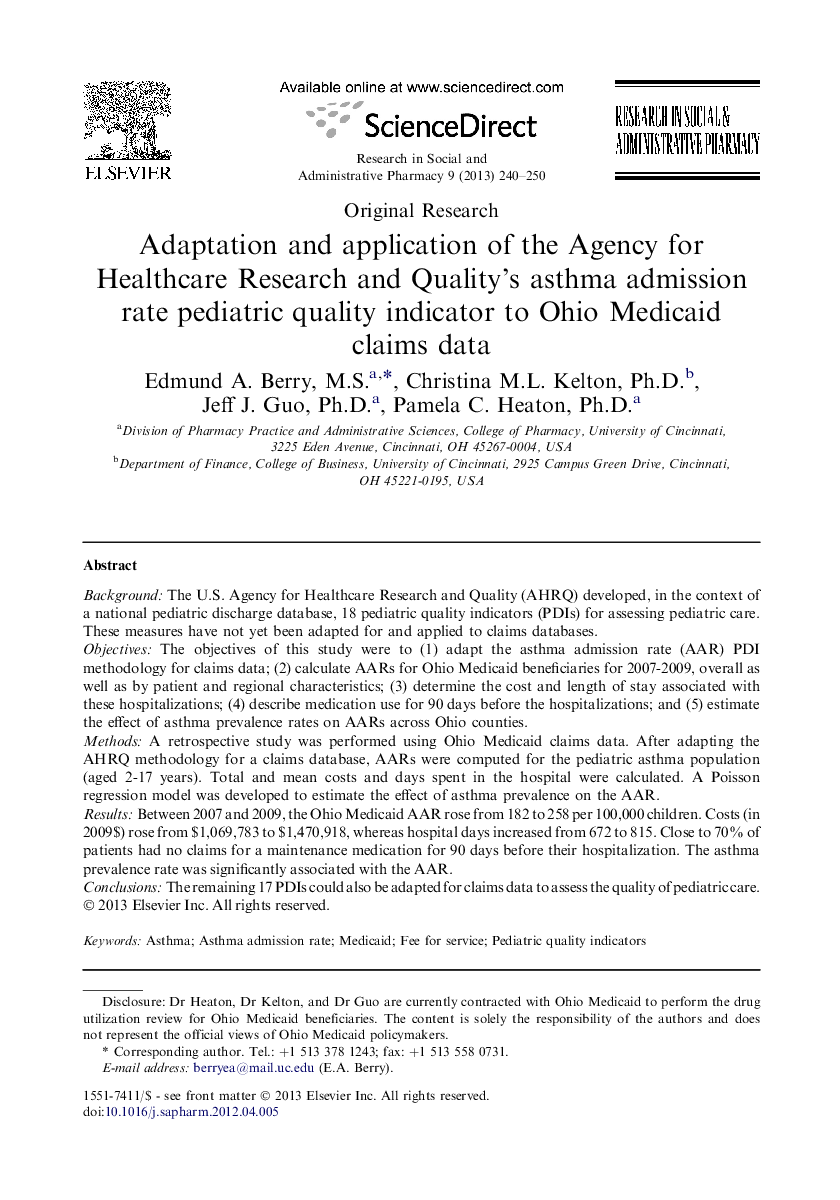| Article ID | Journal | Published Year | Pages | File Type |
|---|---|---|---|---|
| 2508648 | Research in Social and Administrative Pharmacy | 2013 | 11 Pages |
BackgroundThe U.S. Agency for Healthcare Research and Quality (AHRQ) developed, in the context of a national pediatric discharge database, 18 pediatric quality indicators (PDIs) for assessing pediatric care. These measures have not yet been adapted for and applied to claims databases.ObjectivesThe objectives of this study were to (1) adapt the asthma admission rate (AAR) PDI methodology for claims data; (2) calculate AARs for Ohio Medicaid beneficiaries for 2007-2009, overall as well as by patient and regional characteristics; (3) determine the cost and length of stay associated with these hospitalizations; (4) describe medication use for 90 days before the hospitalizations; and (5) estimate the effect of asthma prevalence rates on AARs across Ohio counties.MethodsA retrospective study was performed using Ohio Medicaid claims data. After adapting the AHRQ methodology for a claims database, AARs were computed for the pediatric asthma population (aged 2-17 years). Total and mean costs and days spent in the hospital were calculated. A Poisson regression model was developed to estimate the effect of asthma prevalence on the AAR.ResultsBetween 2007 and 2009, the Ohio Medicaid AAR rose from 182 to 258 per 100,000 children. Costs (in 2009$) rose from $1,069,783 to $1,470,918, whereas hospital days increased from 672 to 815. Close to 70% of patients had no claims for a maintenance medication for 90 days before their hospitalization. The asthma prevalence rate was significantly associated with the AAR.ConclusionsThe remaining 17 PDIs could also be adapted for claims data to assess the quality of pediatric care.
